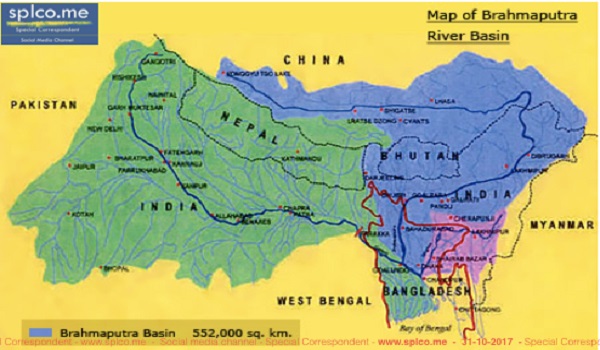Between the Indus, which originates in the west of the Tibet plateau, and the Tsangpo-Siang in the east, there are six major rivers flowing from Tibet to India.

These rivers are crucial for India’s agricultural and industrial needs. As of 2016, China had plans to build 32 dams on the rivers and tributaries, raising concerns among people in lower riparian states.
Top scientists backed by the ruling Communist Party of China are working on a plan to drain the Yarlung Tsangpo (Brahmaputra) river near the Indian border and divert the water through a 1,000-km tunnel, the world’s longest, to arid Xinjiang.
Even by China’s standards, the project is massive. The country’s longest tunnel is the 85-km Dahuofang water project in Liaoning province, while the world’s longest tunnel is the 137-km water supply pipe beneath New York.
Zhang Chuanqing, a researcher at the Institute of Rock and Soil Mechanics in the Chinese Academy of Sciences in Wuhan, Hubei province, is confident the tunnel project will take off despite the enormous costs, engineering challenges, environmental impact and protests by neighbours.
The recommendation (report) from the scientists is drain the original 3,848 km long Brahmaputra intersected at Tsangpo in Tibet Autonomous Region and tunnel it to Xinjiang Uyghur Autonomous Region, which lies in the rain-shadow area of the Tibet plateau.
The proposed tunnel will drop from the world’s highest plateau, its multiple sections connected by waterfalls.
Wang Menshu, China’s top tunneling expert, suggested the government “drain the Yarlung Tsangpo River at Sangri county in southern Tibet, near the disputed border with India”, the report said. “He also added the project would also prompt protests from India and Bangladesh, which lay downstream. But compared to other proposals, which would require the construction of massive dams on the river, the underground tunnels would leave Tibet’s natural landscape largely unscathed,” the report said.
Another leading scientist, Wang Wei, who helped draft the tunnel proposal, told the newspaper more than 100 scientists had formed teams for the nationwide research effort.
The scientists are aware India and Bangladesh would protest against the project but are ready to implement it anyway.
“It won’t leave a mark on the surface for other countries or environmental activists to point their fingers at,” Wang said.
But experts are confident and said with the availability of technology in the years to come and potential benefits, the project will be difficult to resist.
“With new water from Tibet, Xinjiang would boom like California,” Zhang said.
He added China was “now taking a quiet, step-by-step approach to bring it to life”.
A “rehearsal” for the 1000-km tunnel has begun with the building of a tunnel that will be more than 600 km long in Yunnan province in southwestern China. Work on this tunnel started in August and it will comprise more than 60 sections, each wide enough to accommodate two high-speed trains.
The tunnel in Yunnan will pass through mountains several thousand metres above sea level in an area plagued by unstable geological conditions.
“Researchers said building the Yunnan tunnel would be a ‘rehearsal’ of the new technology, engineering methods and equipment needed for the Tibet-Xinjiang tunnel…,” the report said.
The Yunnan project also gives an idea of the enormous costs involved. It will take eight years to build at an estimated cost of 78 billion yuan ($11.7 billion).
“It will carry more than three billion tonnes of water each year from northwestern Yunnan to the province’s dry centre and directly benefit more than 11 million people,” according to the provincial government.














